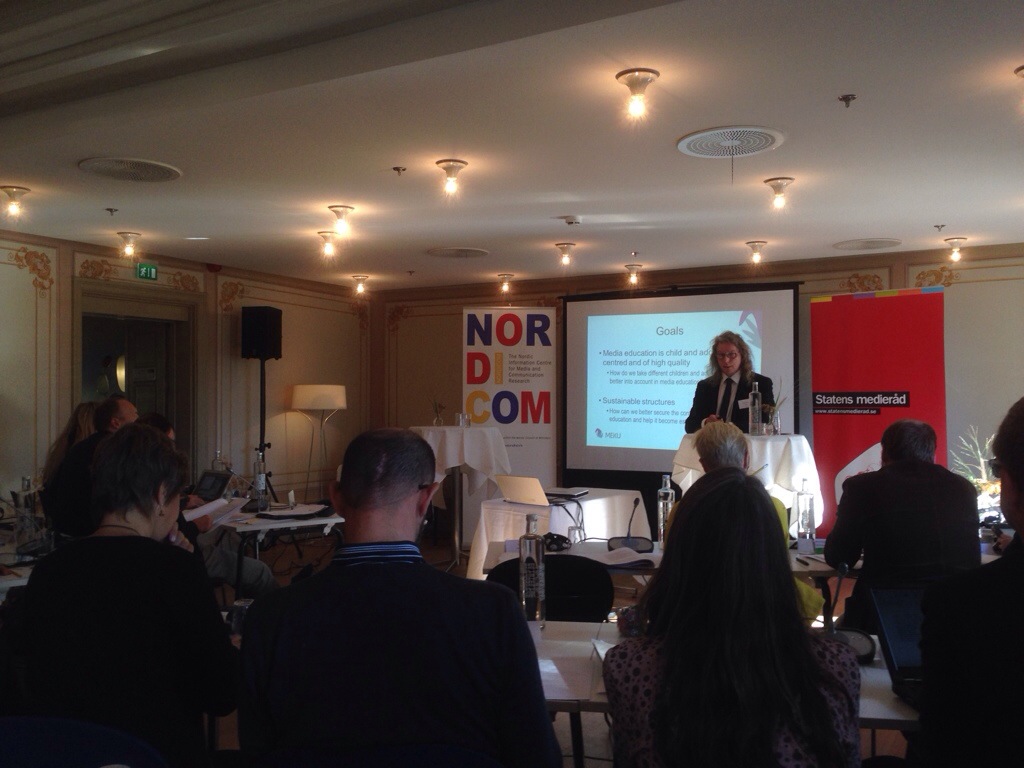I was able to participate to a Nordic expert meeting in Stockholm titled Media and Information Literacy (MIL) – a key to democracy and freedom of speech.
The overview by Jon Dunås (Investigator, Swedish Media Council) highlighted Finland in having a special policy paper titled Good Media Literacy National Policy Guidelines 2013-2016. Similar is not in place in other Nordic countries the way we have in Finland. This idea was later opened more in the Finland’s presentation by Leo Pekkala (Director, Finnish Centre for Media Education and Audiovisual Media MEKU).
Pekkala was well illuminating that Nordic countries generally share similar values. However, it was possible to notice that the overall approach to MIL differed between Nordic countries. Even the concepts that are used seem to differ (e.g. MIL vs. Media Literacy).
- In Norway’s presentation by Stian Lindbøl and Pia Lang (Norweigan Media Authority, Safer Internet Centre) the MIL work connected with EU initiatives a lot despite of missing EU membership of Norway. In the presentation, similar ideas to Finnish ‘turvataidot’ (safety skills) was emphasized, too.
- In Denmark, the background in film education is still apparent but in her presentation Lisbeth Bruneberg Holmegaard (Project Manager, Digital Learning Advisor, Media Council for Children and Young People) emphasized young people’s approach to media literacy issues. This shift was well addressed in her talk about future school.
- In Iceland, the MIL questions meet the idea of multiliteracy approach which is suggested for the next Finnish Core Curriculum of Basic Education, too. Elfa yr Gylfadottir (Director, Media Commission) in her presentation also referred to new laws in Island that take in MIL policies more than earlier. According to Alda Joensen (Senior Principal, Ministry of Education, Research and Culture, Faroe Islands) the Faroe Islands are still in the phase of taking new media along.
- In Sweden, the discussion seems to stay between media studies research and policies/agencies/offices. Educational aspects were less visible, at least today. However, later Magnus Persson (Professor, Malmö University) did see crucial that teacher education takes a bigger role in MIL issues, an idea heard several times in Finland, too.
In another reflection from research, Sirkku Kotilainen (Professor, University of Tampere) pondered the role of research in policymaking. Today at least, the MIL situation in the Nordic countries was mainly handled as a policy and agency matter. Research (in academia) or higher education aspects were less on the table. In the papers delivered in the meeting, different countries were merely compared through agencies and statistical references.
Although generally the values are shared in Nordic countries, no shared vision of promoting MIL yet exists. I guess this meeting was supposed to be the one step to that direction. Then again, the meeting was having several connections with wider initiatives in the level of Europe for example (e.g. Safer Internet). Even the concept of MIL is in line with UNESCO approach and this connection could be detected many times during the meeting. There are problems, too, in building on UNESCO’s MIL approach (see UNESCO Figure 2). When wanting to have a wide understanding of this area, there is a risk of losing the conception of how these areas intertwine.
Maybe the shared vision in Nordic countries is not even needed. We can just try to map what has worked well in different countries, and each country can learn from this map. For example the Guidelines 2013-2016 built in Finland might not be a fruitful process in other Nordic countries. In Finland, we found it important and less competitive between stakeholders but that doesn’t mean somewhere else the case would be the same.
Good learnings and great people in all. Thank you for organizing and thank you all for participation!
Discussion in Twitter #milexpert
